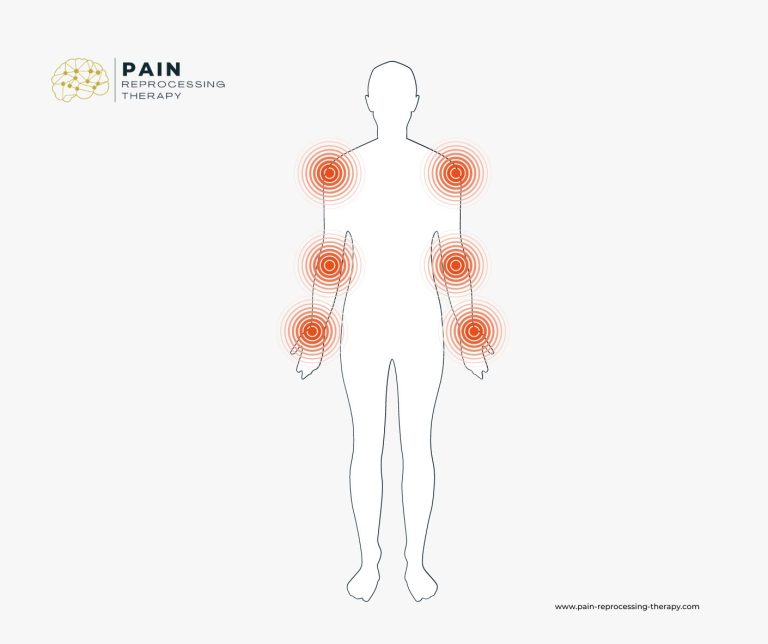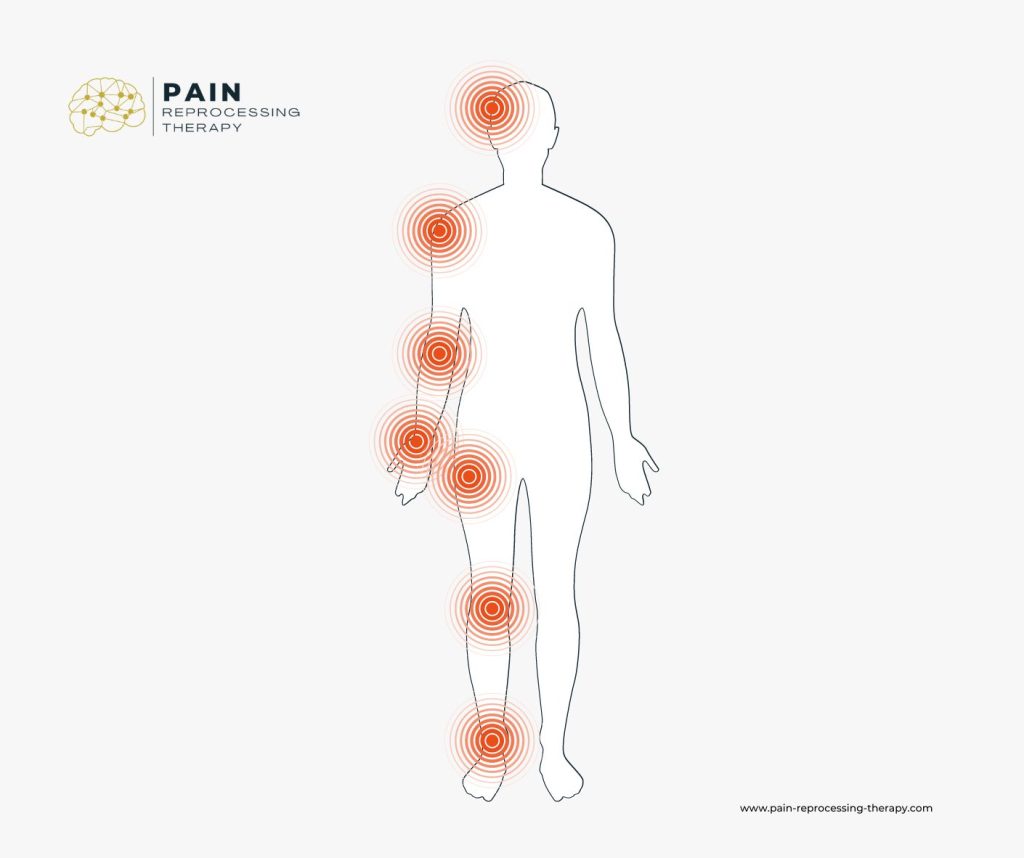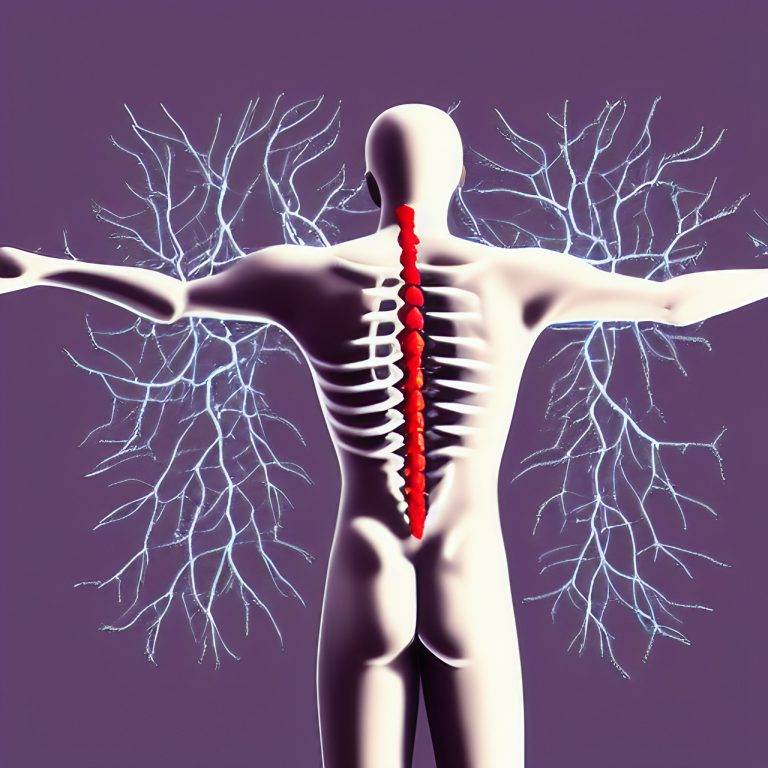What is neuroplastic pain?
Neuroplastic pain is brain-generated pain that occurs in the absence of tissue damage or injury or is not explained by a medical diagnosis. It is a type of chronic pain that is caused by changes in the nervous system.
Before we get into neuroplastic pain, let’s talk about what neuroplasticity is since that is the primary cause of this type of pain.
Neuroplasticity and the central nervous system
Neuroplasticity is the brain’s ability to reorganize and form new neural pathways in response to changes in the environment or injury. This means that when we experience pain or injury, our brain and spinal cord (the central nervous system) will attempt to adapt and change to better deal with it. For example, in stroke patients, the brain and central nervous system will reorganize themselves to compensate for the damaged area.
So, neuroplasticity is a normal and usually positive process that occurs in everyone’s brain in response to changing conditions.
Neuroplasticity and chronic pain
Sometimes neuroplasticity goes awry, and neuroplastic changes in the brain can lead to chronic pain. The brain incorrectly ‘learns’ to feel pain even where there is no injury or when the initial injury has healed. The brain becomes “locked in” to a pain state, and even small changes can trigger the feeling of pain. This is known as neuroplastic pain because changes in neural pathways are the primary cause of pain.
In one research study, scientists followed patients with acute back pain. They found that in patients who developed chronic back pain, fMRI brain activity shifted from acute back pain regions to parts of the brain responsible for emotional control.(1)
Neuroplastic pain IS real pain
Many chronic pain patients are told by well-meaning friends, family and even medical professionals that their pain is all in their heads. This can be frustrating and confusing, as it seems to suggest that the pain is imaginary. However, it’s important to understand that all pain is real, including neuroplastic pain. All pain is felt in the brain, whether it’s caused by an injury or not. But in neuroplastic pain, the pain is caused by changes in the brain itself, so the treatment needs to target the brain, not the perceived site of pain.
Symptoms of neuroplastic pain
There are a number of signs that could indicate that your pain is neuroplastic. In this section, we will go through some of the more common signs. The more of them you recognise in yourself, the more likely it is that you are suffering from neuroplastic pain.
Pain that starts without an injury
One of the clearest signs that you may be suffering from neuroplastic pain is if your chronic pain started without an injury. This is often seen in conditions like fibromyalgia or back pain, where there is no clear injury or trigger for the pain.
Chronic pain that persists after the injury has healed
If you have an injury that has healed, but you continue to feel persistent pain, this may be a sign of neuroplastic pain. This is because the brain has become ‘locked in’ to a state of pain, and even though the injury has healed, the brain continues to send pain signals. This is referred to as central sensitization, meaning that the central nervous system has become sensitized to pain.
Pain begins some time after an initial injury
If you started to experience pain some time after an initial injury (known as delayed onset pain), this may be a sign that your pain is neuroplastic. This is because the brain has taken some time to reorganize and form new neural pathways that generate a painful sensation.
Chronic pain begins during a stressful period
If your pain begins during or after a period of stress, this may be a sign that your pain is neuroplastic. Chronic stress can trigger changes in the brain that lead to chronic pain.
Changes in pain intensity or location
If you find that your pain frequently changes in intensity or location, this may be a sign that your pain is neuroplastic.
Pain that comes on some time after, but not during, physical activity
If you often have pain some time after physical activity and not during it, this may be a sign that your pain is neuroplastic. This is because the pain is not caused by the physical activity itself but by changes in the brain that are triggered by the activity.
Your pain is not explained by a medical condition
If you have seen a medical professional and they cannot find a cause for your pain, this is one of the clearest signs that you may have neuroplastic pain.
Your symptoms are inconsistent with your diagnosis or take longer to get better than expected
If you have a medical condition, but your symptoms do not match what is typically seen in that condition, or if it takes much longer for your symptoms to improve than would be expected, this may be a sign that your pain is neuroplastic.
You have tried many pain management treatments, but nothing has worked
If you have tried a variety of pain management treatments and nothing seems to work, this may be a sign that your pain is neuroplastic. This is because, as mentioned earlier, neuroplastic pain needs to be treated differently from other types of pain.
Symptoms affect both sides of the body
If your symptoms affect both sides of your body, this may be a sign of neuroplastic pain. This is because physical tissue damage is unlikely to affect both sides of the body in the same way.

Chronic pain affects the whole side of the body
If your pain affects the whole side of your body (for example, left arm, left-sided back pain and left leg), this is another sign that your pain may be neuroplastic.

Chronic pain symptoms are triggered by stress and improve during enjoyable activities
If your chronic pain is triggered by stress or disappears during fun activities, you may have neuroplastic pain.
Symptoms are triggered by the environment
If your pain is triggered by unrelated neutral triggers such as sounds, smells, time of day, weather or a social situation, this may be a sign that your pain is neuroplastic.
Family history of chronic pain
If several members of your family have a history of chronic pain conditions that do not appear to be related, for example, if your mother has chronic back pain, your sister has fibromyalgia, and your brother has chronic headaches, this could indicate that your pain is neuroplastic. This is because certain familial traits can lead to learned neural pathways that generate chronic pain.
History of past trauma
A history of past trauma is also a sign that your chronic pain may be neuroplastic. This is because trauma can lead to changes in the brain that make you more susceptible to pathological pain. Emotional trauma can include things like abuse (physical, emotional or sexual), neglect, bullying and more.
How is neuroplastic pain treated?
As most clinical chronic pain is neuroplastic, the treatment has to target the nervous system to rewire the brain to stop it from misinterpreting pain signals. The most successful scientifically proven treatment to eliminate chronic neuroplastic pain is Pain Reprocessing Therapy.
Pain Reprocessing Therapy (PRT)
In a randomized controlled trial published by JAMA Psychiatry in 2021, 151 people with mild to moderate chronic back pain were recruited and randomized to receive one of three treatments:
- Pain Reprocessing Therapy (9 sessions administered over 4 weeks),
- Placebo injections into the back, or
- The usual back pain management care.
All patients were asked to rate their pain intensity before starting the treatment. Four weeks later, participants rated their pain levels again and underwent fMRI scans to look at their brain activity.
At the end of four weeks, 66% of people who underwent PRT said they were either pain-free or nearly pain-free, and 98% had significantly reduced pain levels. In contrast, only 20% of those receiving placebo injections and 10% of those getting usual back pain management care reported similar improvements.
Patients-reported improvements in pain intensity were supported by fMRI scans. The brains of people who underwent Pain Reprocessing Therapy had significantly decreased activity in the areas that were responsible for pain processing and increased activity in the areas associated with positive emotions. So, Pain Reprocessing Therapy actually rewired their brain.
Remarkably, when the researchers followed up one year later, the improvements in pain were maintained without further therapy.(2)
Find out more about Pain Reprocessing Therapy.
So, if you have chronic pain, it is worth considering Pain Reprocessing Therapy.
FAQs
What does neuroplastic pain feel like?
As neuroplastic pain is generated by the brain, it can feel differently for different people. It can be a sharp or dull painful sensation, it can feel like a burning pain, or it can be a debilitating pain that prevents you from carrying out your normal activities.
Are there any tests for neuroplastic pain?
At present, there are no specific tests for neuroplastic pain. It is diagnosed when no underlying cause of chronic pain can be found or if the pain is inconsistent with the injury or medical diagnosis.
What is the difference between neuroplastic pain and other types of chronic pain?
Neuroplastic pain is caused by changes in the brain, whereas other types of chronic pain may be caused by peripheral injury or illness. But the presence of tissue damage or a diagnosed condition does not always explain the symptoms. For example, many patients with chronic back pain have neuroplastic pain, even when tissue damage is observed on MRI scans.
Can you rewire your brain not to feel pain?
Yes, Pain Reprocessing Therapy is a revolutionary new evidence-based treatment proven to significantly reduce pain in 98% and cure chronic pain in 66% of patients.
Can I do anything to enhance neuroplasticity in my brain?
Scientists are actively researching how we can enhance our neuroplasticity. There is some evidence that intermittent fasting can improve the brain’s ability to rewire.(3)
Summary
Chronic pain is a complex condition that is not well understood. However, recent research has shown that chronic pain is often neuroplastic, meaning that it is caused by changes in the brain.
There is no one-size-fits-all approach to treating neuroplastic pain, but the most successful scientifically proven treatment is Pain Reprocessing Therapy (PRT). PRT is a short-term treatment (9 sessions over 4 weeks) that has been shown to significantly reduce pain in 98% of patients and cure chronic pain in 68% of patients, and the effects last at least a year.
If you are suffering from chronic musculoskeletal pain, contact us to see if Pain Reprocessing Therapy may be right for you.
References
1. Hashmi, J. A., Baliki, M. N., Huang, L., Baria, A. T., Torbey, S., Hermann, K. M., Schnitzer, T. J., & Apkarian, A. V. (2013). Shape shifting pain: chronification of back pain shifts brain representation from nociceptive to emotional circuits. Brain, 136(9), 2751–2768. https://doi.org/10.1093/brain/awt211
2. Ashar YK, Gordon A, Schubiner H, et al Effect of Pain Reprocessing Therapy vs Placebo and Usual Care for Patients With Chronic Back Pain. Jama Psychiat 2022;79:13–23. https://doi.org/10.1001/jamapsychiatry.2021.2669
3. Sibille, K. T., Bartsch, F., Reddy, D., Fillingim, R. B., & Keil, A. (2016). Increasing Neuroplasticity to Bolster Chronic Pain Treatment: A Role for Intermittent Fasting and Glucose Administration? The Journal of Pain, 17(3), 275–281. https://doi.org/10.1016/j.jpain.2015.11.002

